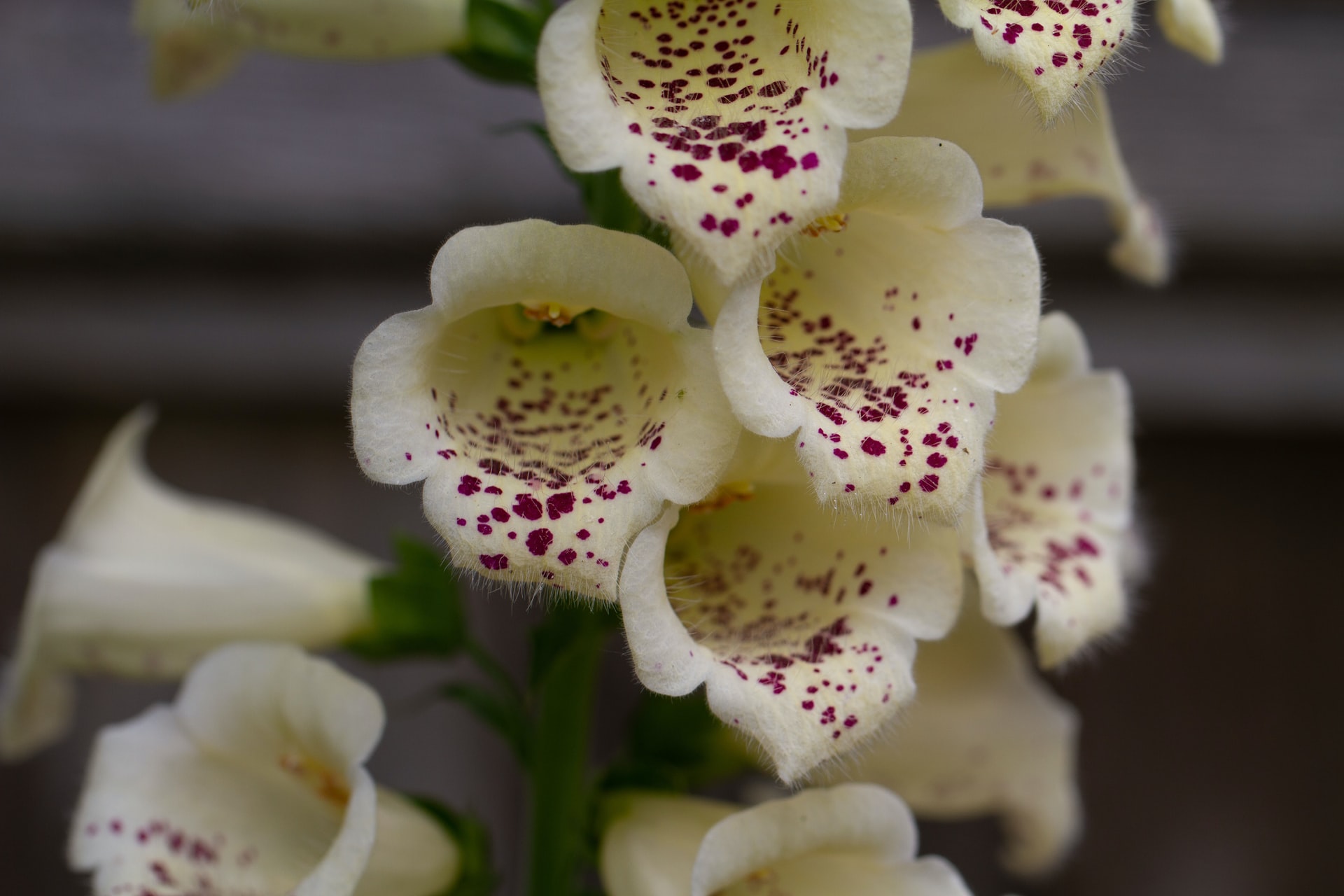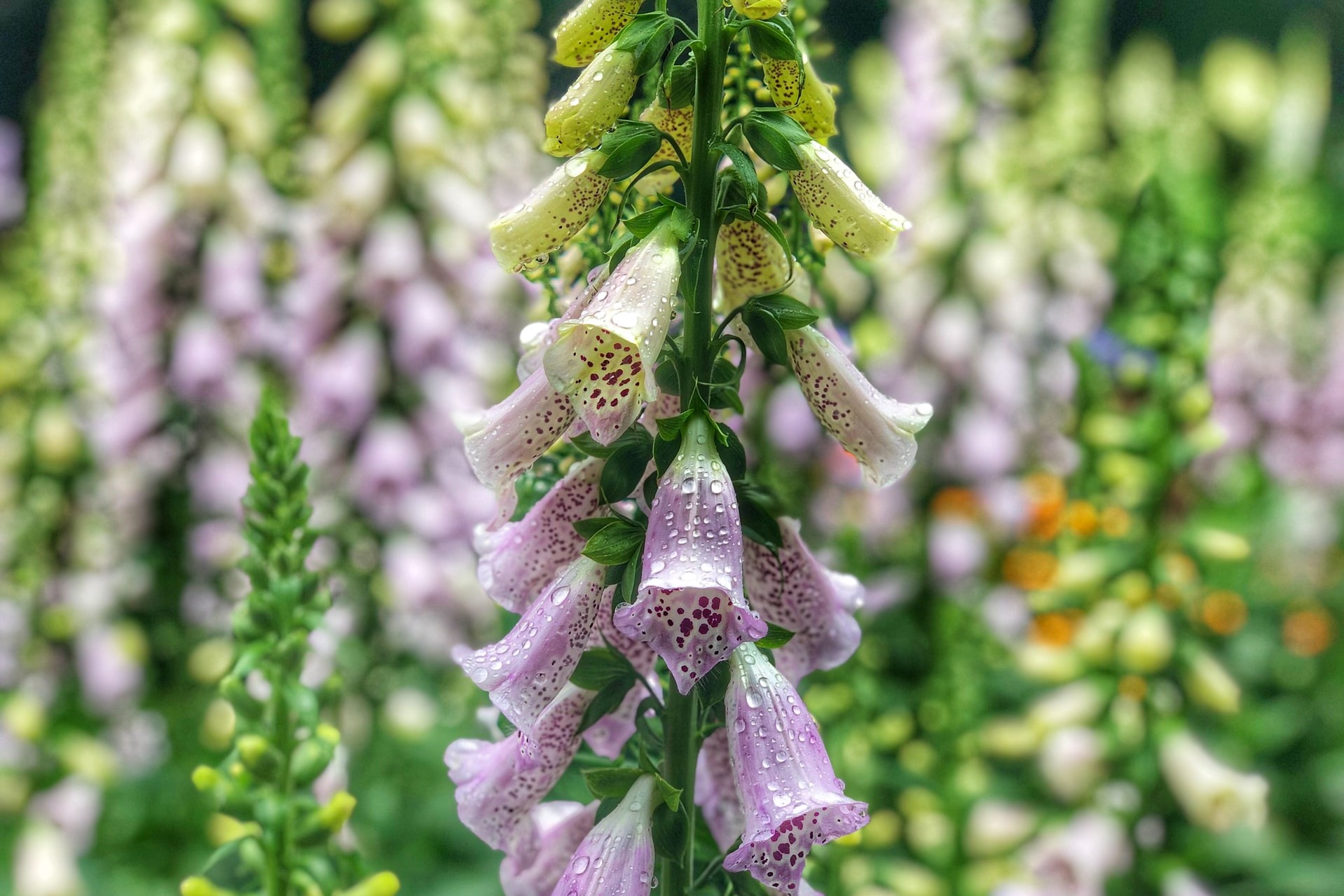With tall, slender spikes covered in blooms in a wide array of colors and patterns, foxgloves are a beautiful addition to any garden or room! If you aren’t sure how to grow foxgloves and want to know how to cultivate these beauties, then look no further! Here are the five most important things to keep in mind when tending your foxgloves.
What variety of foxglove is best for you?
While it might be tempting to pick your foxglove based only on appearance, there are other factors to consider, too! Caring for your foxgloves likely won’t vary too much, but there can be slight differences in preferences. To be sure your foxgloves thrive, do a little research into the available varieties to see what works best with your garden.
Foxgloves in general are tolerant of a range of temperatures, able to grow in USDA Hardiness Zones 4 through 10. However, some varieties tolerate cold or drought better than others. Be sure to consider where you live when picking which foxglove to get.
When choosing your variety, look to see if it’s a sterile hybrid or not. Some hybrid varieties, such as Polkadot Polly, Illumination Flame, and Glory of Roundway are gorgeous, unique blooms, but they do not produce seeds. This means that if you want to keep these varieties in your garden, you’ll need to replant them every year or two. However, these varieties also tend to bloom for longer, making them perfect for containers.

The standard foxglove variety is Digitalis purpurea. Although the name “purpurea” means “purple,” it comes in a range of colors, including the popular Camelot series. If you’re looking for a more unusual looking foxglove, you might try Mountain Mixed, which has flowers that face up instead of out, or Small-Flowered foxglove, which, you might guess from the name, has small, dark flowers.
Is your soil right for foxgloves?
Foxgloves will tolerate a lot of different soil types, but they do best in soil that is rich and well-draining. If you plan on growing your foxglove in containers, look for potting soil that is rich in humus or decomposed organic matter.
If your garden soil is poor quality, you can improve it by adding a couple inches of compost into the top 6 inches of the soil. This adds humus to your soil and helps any plant thrive, including foxglove!
If you aren’t certain if your soil is well-draining or not, there’s a simple way to test it. Dig a small hole in your garden, roughly a foot in diameter, and fill it with water. If the water takes about half an hour to drain, you have average, moderately well-draining soil. If it takes longer than that, you have poorly draining soil, and a shorter time means you have well-draining soil.
You can downsize the hole a bit, but be sure to downsize the time, as well. Smaller holes will drain faster than larger ones. In addition, you want a bit of depth to your test hole. The topsoil of your garden may be looser and quicker to drain than deeper soil, which could lead to a plant’s roots sitting in water for too long without you realizing it.
How much water is too much water?
Although they prefer well-draining soil, foxgloves enjoy a fair bit of moisture. Keep the soil slightly moist, and don’t let it get too dry. Avoid soggy soil, as this could lead to problems such as root rot or mildew. Check the moisture level of the soil before you water and make sure you know how well your soil drains beneath the surface, so you can account for that, as well!

Keep an eye on the sky
Foxgloves need different amounts of sun depending a little on variety and a lot on climate. In any climate, foxgloves don’t do well in full shade and need at least a few hours of sunlight every day. In hotter climates, foxgloves enjoy morning sun and afternoon shade, to avoid sunburns. In colder climates, however, foxgloves need a bit more sun, and can be planted in full or mostly full sun.
Self-seeding or replanting?
Foxgloves, with the exception of sterile varieties, are prolific seeders. They produce a lot of seeds, meaning that you don’t have to worry about replanting them. However, if you cut the flower stalks before they produce seeds, they won’t reseed. This means that if you’re growing foxglove for cut flowers, you’ll likely need to do more replanting than you otherwise would.
Most foxgloves are biennial, meaning they live for two years. In the first year, they grow leaves, and they put out flowers in the second year. However, some varieties are perennial, meaning they only live one year. Both varieties have pros and cons, so think carefully when deciding!
Now you know how to care for and cultivate your foxgloves! Although there are a lot of things to consider when picking and planting your flowers, these gorgeous blooms are certainly worth the effort.
Looking for more? Check out some drought-tolerant perennials to plant this summer! They’ll sure make another beautiful addition to your garden.



